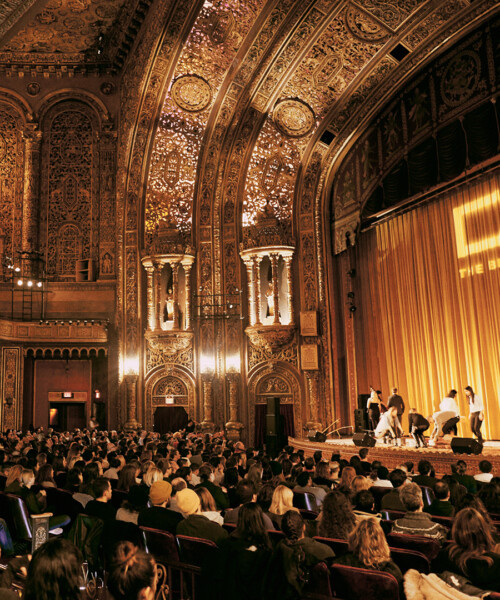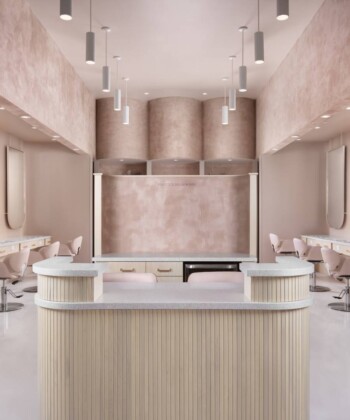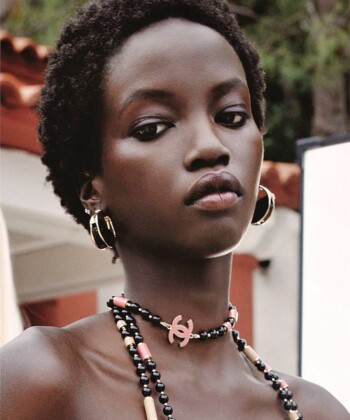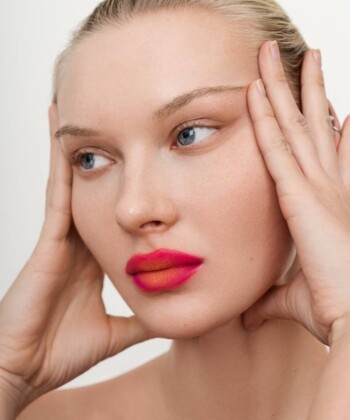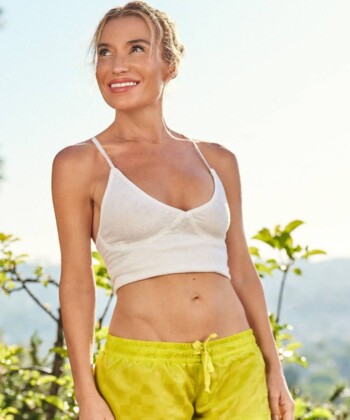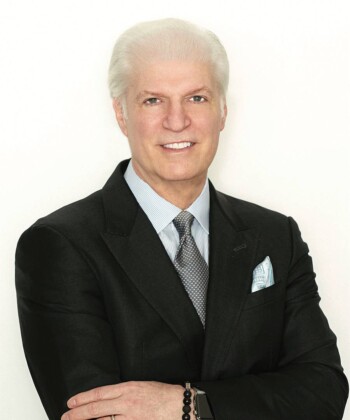Craning my neck to look backwards, I notice that just about every row of red velvet seats behind me has filled with people. The gradual slope of the floor here at the United Palace Theater in Washington Heights makes the crowd look like a cresting wave, and a loud conversational buzz hangs over the room. Soon though, the 1,800 people gathered here will sit in complete and utter silence for 15 long, serene minutes. The only sound will be a symphony of whimsical reverberations coming from crystal singing bowls played by Sara Auster, a certified Sound Therapy Practitioner seated cross legged on the stage.
We’re here for The Big Quiet, a large-scale meditation session and musical performance born out of an organization called Medi Club. On the first Wednesday of every month, roughly 150 people meet in New York City’s West Village, where founder Jesse Israel and his partner-in-meditation Lauren Bille lead members through what Israel calls “the Blend.” This combination of practices includes varying warm up exercises led by different members of the community, silent meditation, musical performances and finally, conversations in small groups. “We talk about relationships, dating, sex, discovering life purpose, fear, money—we talk about everything in Medi Club,” says Israel.

Image by Felix Kunze
The silent meditation portion of the evening is not specific to any religion or practice. “We really like to be respectful of the various styles of meditation that are practiced. We really love being a place where you can practice whatever you’re into,” says Israel. At The Big Quiet, the run of show is the same, but grander, and no time is set aside for the crowd to converse.
As Auster plays her singing bowls, Xavier Eikerenkoetter, Spiritual Director of the trans-denominational church which worships at the theater regularly, sits next to her, briefly instructing the crowd to breathe. Soon enough, we all sink into a stupor that feels like the savasana I’ve always been searching for at overpriced yoga classes. My mind wanders a bit, but I’m so sleepy that it’s a dreamlike stream of consciousness, not a series of distractions. When it’s time to open my eyes, I don’t want it to end, but instead of a sharp intrusion from reality, a string ensemble begins to play in the distance, slowly making their way to the stage.
Before the event, Bille had explained to me that the meditation serves as a way to open you up to accepting music. As additional performers including singer Frank Bell, a goosebump-inducing choir led by Anwar Robinson and a drum ensemble seamlessly take the stage, I understand exactly what she meant. With an empty mind, the music feels more powerful.

Image by Collin Hughes
The regal reds and golds of the theater equally add to the experience, and since The Big Quiet’s inception, choosing the right venue has been key for the organizers. “We love spaces that can hold lots of people, that are unique, that are special and hold a powerful energy,” says Israel. In October, the event was held inside the Oculus. Although last-minute permitting issues caused the show to go on only unofficially, Israel explained the experience of group meditation at Ground Zero as a touching one. Attendees gathered peacefully, and he says, “As a result of that sort of energy, not only did they allow us to have the entire Big Quiet that we had prepared— the choir, the string quartet and the whole thing, obviously without the stage and without the amplification—but also, the NYPD supported us. They came up to us afterwards and congratulated us and shook our hands. They took pictures with us. They asked us how they could get into meditation.”
Israel, for one, got into meditation while working at a high-stress job in the music industry. Now, he works full time with Medi Club, and hopes to grow the initiative to cities outside New York. “I [meditate] for 20-30 minutes every morning, usually right after I brush my teeth and before I check my phone. Then I meditate in the afternoon or early evening usually between 4 and 6,” he says. “I’ve meditated at music festivals when there’s just like tons of sound and drunk people and chaos all around. When I was in the music industry, meditating was a huge part of how I was able to survive. I meditate on the subway all the time. I’ll do it standing up sometimes.”
To stay updated on these events, sign up for the Medi Club newsletter here, and the Big Quiet newsletter here.


























